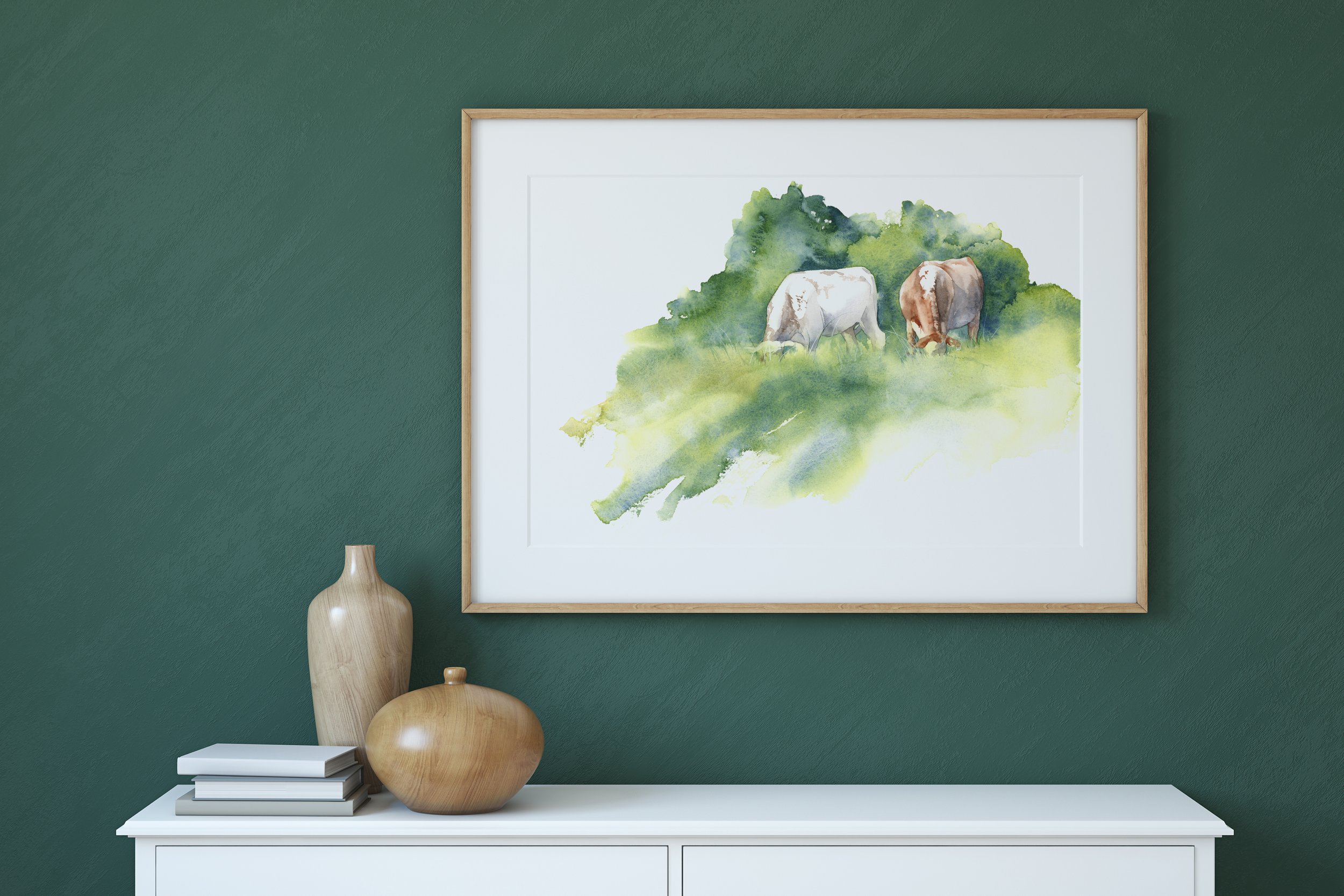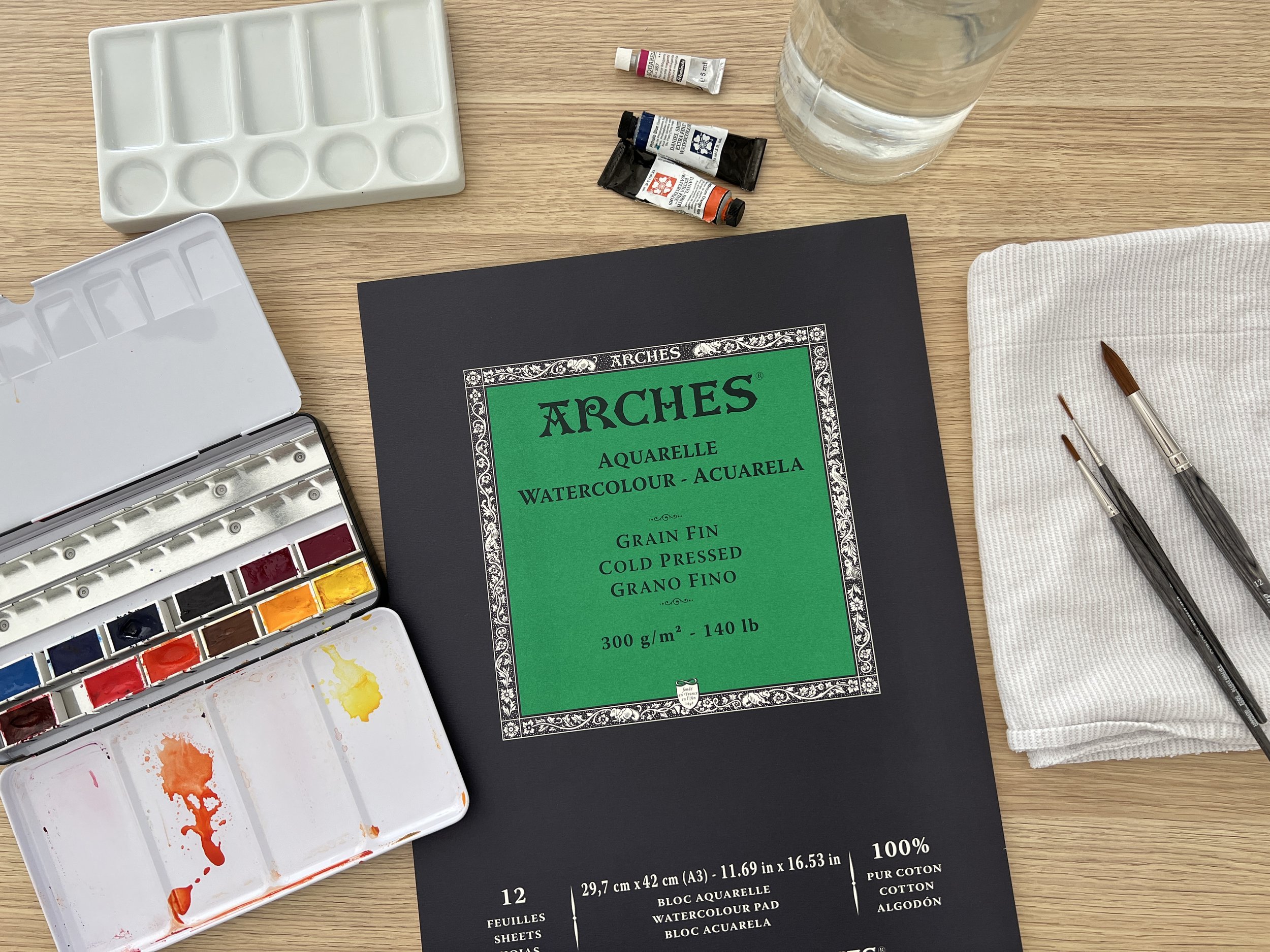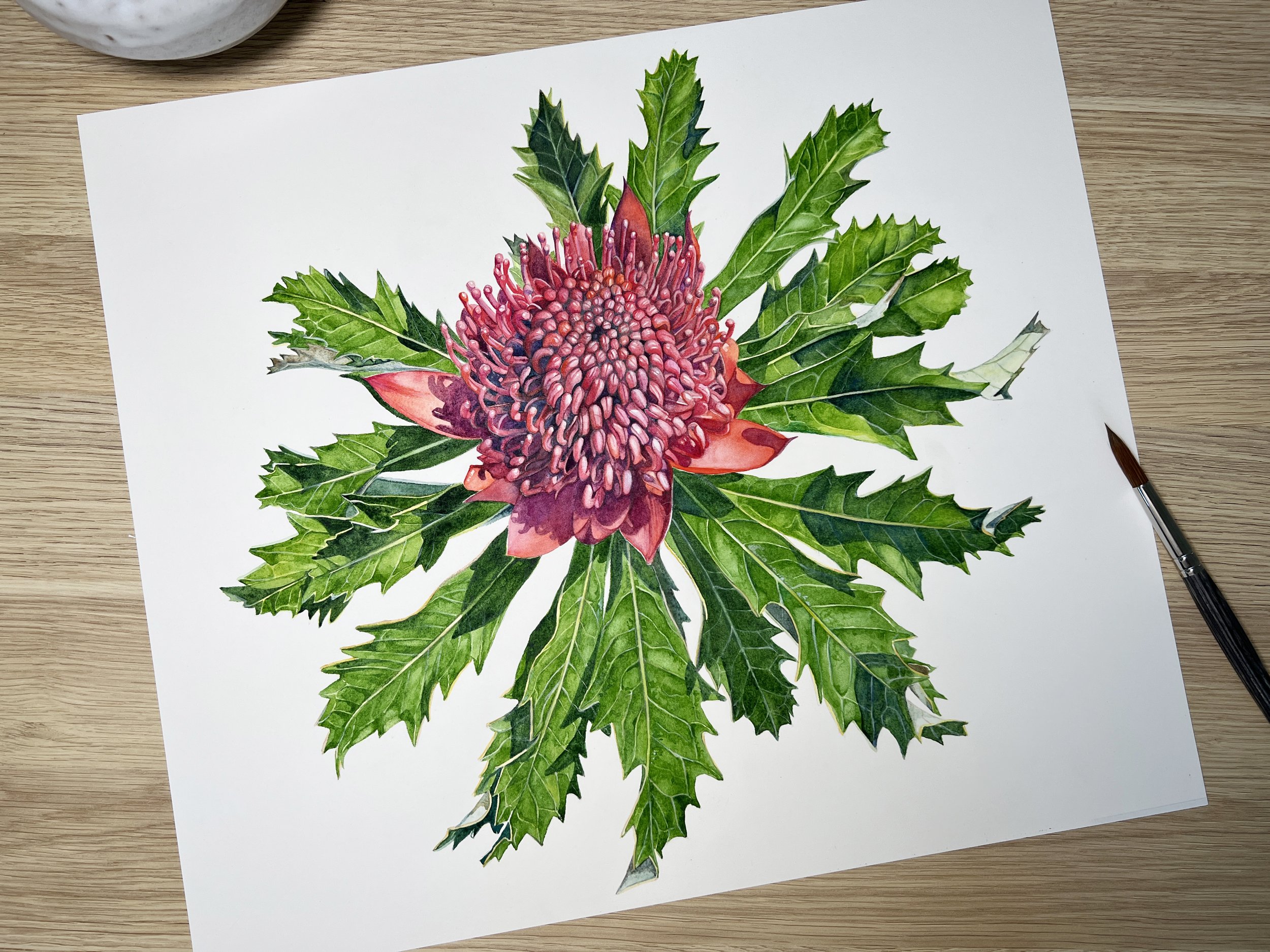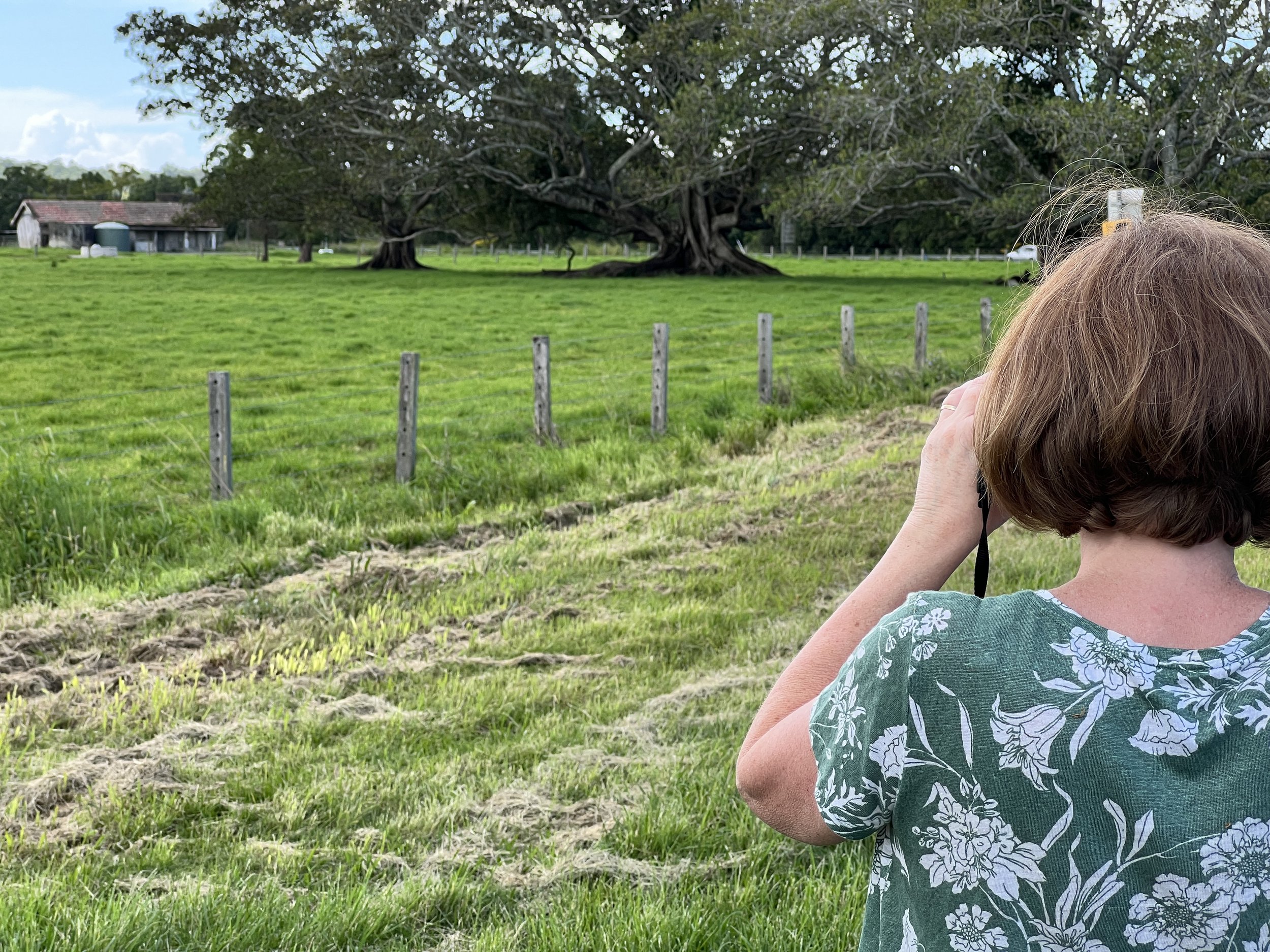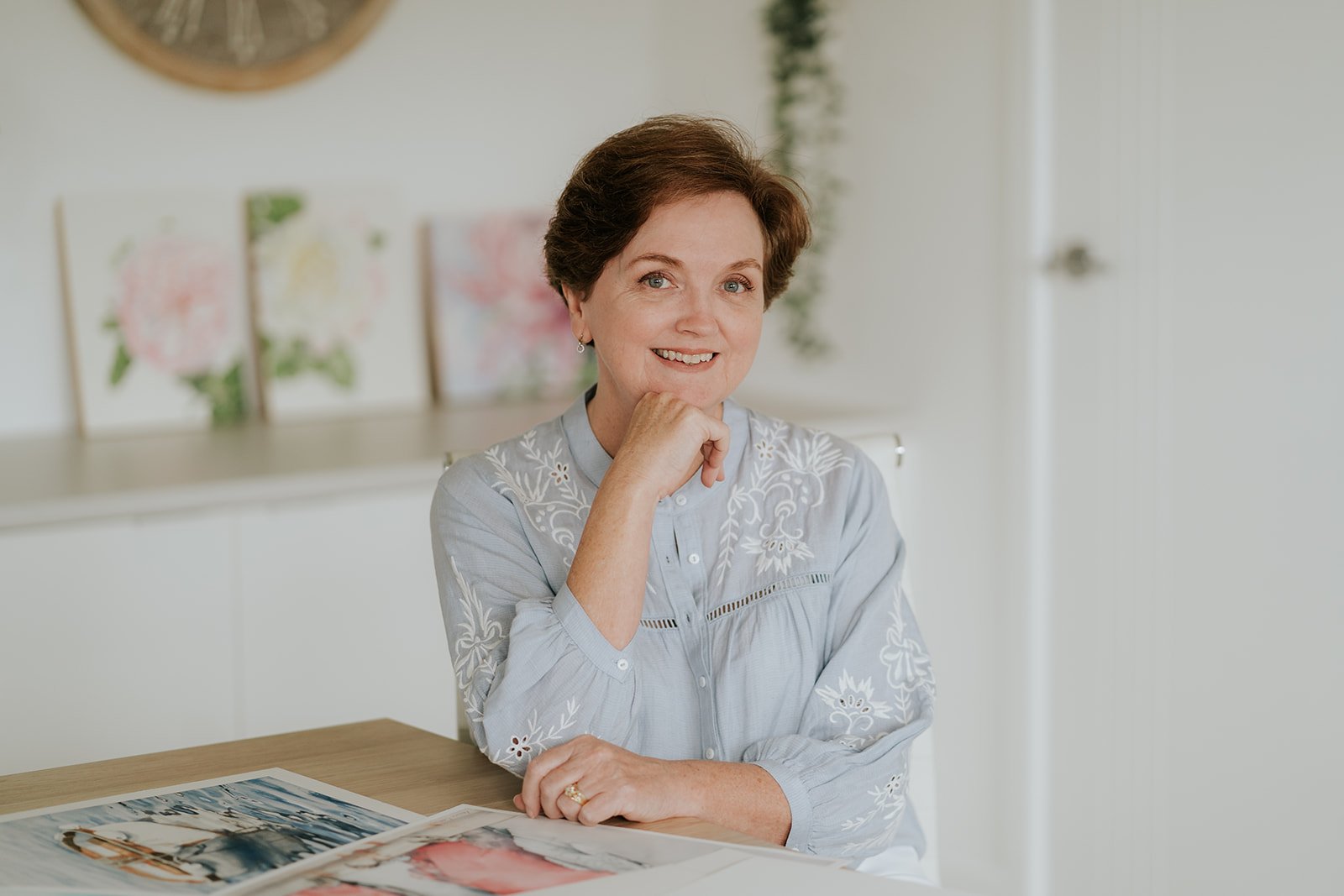FAQ
Frequently Asked Questions
Welcome to the FAQ page where we answer many of your most frequently asked and common questions about Watercolour painting, art supplies & materials, and techniques.
Disclosure: This post contains affiliate links, which means I may earn a commission if you make a purchase through my link at no extra cost to you.
Watercolour Art
-
Watercolour art is a medium of painting using water-based pigments, usually on paper. The transparency and luminosity of the paint make it popular for creating delicate, airy and fluid artworks.
-
Watercolour wall art refers to watercolour paintings that are hung on walls. They can include a wide variety of subject matter, including animals, flowers, birds, landscapes, and more.
-
Item
Yes, Louise De Masi sells original watercolour art, paintings, and prints in her online shop. You can explore a variety of works that showcase her unique style and artistic vision.
description
“Dorrigo Cows” Landscape vignette
Art Classes
-
Louise offers step-by-step watercolour painting tutorials suitable for beginners, intermediate, and advanced artists.
-
Yes! Louise breaks down each tutorial step by step, making it easy for beginners to follow.
-
Louise has 2 options for you to choose from.
Purchase individual classes
Subscription based classes
Skillshare classes
Purchase an individual class, technique tutorial, or bundle at the Louise De Masi Art School and you’ll have lifetime access to the lessons and all downloadable files. You can learn in your own time at your own pace.
If you prefer, you can subscribe on Patreon and as long as your membership is active, you'll have unlimited access to all of her tutorials.
Louise has a full Patreon Index of all her online classes and technique videos that link directly to Patreon so that you can easily find each and every one of them.
Unlock the captivating world of watercolour with Louise’s collection of comprehensive step-by-step tutorials, available exclusively on Skillshare.
-
Tutorials include a video demonstration, line drawings, a supplies list, progress photos, and a final reference image.
-
Tutorials are designed to be accessible for all skill levels. Beginners have successfully completed advanced tutorials with guidance.
-
Subscribers gain access to over 200 exclusive video tutorials, reference materials, downloadable resources, and a supportive art community.
-
Yes, all previous tutorials remain accessible for as long as you are a patron.
-
Louise releases at least one new Patreon tutorial every month, along with other content to inspire and improve your skills.
-
You will lose access to the tutorials and resources after your billing period ends.
-
Louise does not provide individual feedback or live Q&A sessions at this time.
-
Louise’s tutorials are designed to help you on your creative journey. Any painting you create from a tutorial where she uses her own reference photo is for personal use only. They can't be sold or entered into an art competition.
Louise indicates on the Supplies Lists where the photos come from.
Permission is not given to paint any of her earlier paintings that are not tutorials because some of them are licensed. Also, a few of her earlier paintings were painted from photographs where she sought the permission of the photographer. The photographer gave her permission to use it, not others.
If Louise does a tutorial where using another photographer's photo (eg from Pixabay) that is available for anyone throughout the world to download (copyright free) and use you are free to sell the paintings you create from the tutorial as long as the image meets to correct usage rights. (please check when you download an image)
If Louise does a tutorial and uses a photo that she paid for and downloaded from the website Wildlife Reference Photos, in order for you to sell the painting you create from the tutorial you will need to purchase and download the photograph yourself. This is in accordance with the Terms and Services of the Wildlife Reference Photo website.
If you share any finished painting on social media Louise would really appreciate it if you could link back to her account (be it on Facebook, YouTube or Instagram) and mention that you painted it in one of her tutorials.
Louise painting a rose for a tutorial
Art Supplies & Materials
-
To get started with watercolour painting, you'll need watercolour paints, 100% cotton watercolour paper, brushes, and water. You will also need a palette, old towel, and a water container. If you decide to stretch your paper you will also need a rigid board such as gator board some gummed tape, stapler and staples. Check out the Art Supplies page.
-
For beginners in watercolour painting, choosing the right set of paints is essential. Some highly recommended brands include Winsor & Newton, Daniel Smith, Schmincke, and Roman Szmal. A good beginner set typically features a diverse selection of colours. As you advance your skills, consider supplementing your collection with individual tubes or pans. To create a broad spectrum of colours, ensure you have at least a warm and cool red, a warm and cool yellow, and a warm and cool blue. These foundational colours will enable you to mix an array of shades for your artwork. Check out Louise's recommended art supplies.
-
Yes she does. Louise recently partnered with Jackson’s Art Supplies to produce several Louise De Masi branded art supplies. This exclusive collection includes :
Schmincke Horadam Watercolour Paint: Louise De Masi Set – 5ml – Set of 12
Studio Synthetic Watercolour Brushes: Round – Louise De Masi Selection Set of 5
Ceramic Palette: 33 Well – 32.5x32.5cm (Apx.13x13in)
Stackable Round Ceramic Palette: 7.5cm (3in) Diameter – Set of 6
Fabriano Artistico Fat Pad: Spiral Bound – 100% Cotton, 300gsm – A4, 20 Pages
-
No, but Louise mainly uses her Schmincke watercolour palette and branded tools in tutorials, to simplify and enhance your experience.
-
The best paper for watercolour painting is 100% cotton rag paper. Louise De Masi recommends brands such as Arches, Saunders Waterford, and Fabriano Artistico.
Watercolour paper comes in different weights and textures. Look for paper specifically designed for watercolour painting, and choose a weight that suits your painting style. A rough texture will create a more textured look (good for landscapes), while a smoother texture is better for fine details and printing. The texture of cold press paper, sits in between hot press and rough paper and is the most popular texture among artists.
Watercolour board is as it sounds, a thick board, that doesn’t require stretching and can be great for large or small paintings if you don’t want to stretch your paper.
-
Different brushes have different shapes and sizes, which are suited to different techniques. Generally, round brushes are good for washes and details, while flat brushes are good for broad strokes and edges. Experiment with different brushes to see which ones work best for you. Read more about brushes here.
-
It’s useful to know the pigment codes of the paint you use because colour names vary between different brands. The same pigment can have different names. For example, the pigment code PB15 is called Manganese Blue Hue in the Daniel Smith brand but in the Winsor & Newton brand it’s called Winsor Blue.
If you are following a painting tutorial, knowing the pigment codes can help you substitute colours between different brands. Louise made a post about substituting paint colours.
-
Whilst gouache and watercolour paints may look similar at first glance, they have distinctive qualities that set them apart. Differences in opacity, transparency, texture, and permanence help set them apart.
Watercolour is a transparent medium that tends to be more fluid, while gouache is an opaque medium with a much thicker consistency. Watercolour paints are known for their soft, delicate washes of colour while gouache offers bright, heavy pigment coverage when applied. Because gouache has larger pigment particles than watercolour, it is more opaque. See more information at this post on the Difference Between Watercolour and Gouache.
Art Supplies used by Louise
Techniques & Guides
-
What are the benefits of painting in watercolour?
One of the main benefits of using watercolour is that, once you have an understanding of the basic techniques, it is relatively easy to learn. This makes it ideal for beginners and experienced artists alike who are looking to explore the medium further.
Read more about watercolour painting here.
-
It's a good idea to stretch your watercolour paper before painting on it, especially if you're using a lightweight paper. This will prevent the paper from buckling or warping as it absorbs water. Read here about how Louise stretches her paper.
-
There are many ways to create textures and effects with watercolours, including wet-on-wet, dry-brushing, lifting, splattering, and masking. Granulating medium that can be mixed with paint is also used for creating texture. Experiment with different techniques to see which ones work best for the effect you want to achieve.
Read more here "25 techniques" and here "9 techniques".
-
Watercolour techniques include wet-on-wet, wet-on-dry, dry brush, glazing, charging and more. Each technique has its own unique effects and challenges, and mastering them can help artists create a range of styles and moods in their artworks.
Wet on Wet
Original Paintings and Prints
-
You can purchase original watercolour paintings and archival prints from Louise De Masi's online shop. Her collection includes a range of subjects and styles, from animals to birds to botanical subjects.
-
When framing and displaying your watercolour paintings, it's important to choose a good quality frame that complements the painting and protects it from damage. Use only acid-free, archival matting to prevent deterioration over time.
This applies to framing archival prints as well so they will last a long time.
-
To care for and preserve your watercolour paintings, avoid exposing them to direct sunlight or moisture, and store them in a dry, cool place. Use acid-free materials when framing and matting your paintings.
If you need to clean your painting, use a soft, dry brush to gently remove dust and debris.
Read about more option here.
-
Yes, we ship internationally. Shipping rates may vary depending on your location.
Warratah Painting
Inspiration
-
Louise’s watercolour paintings are inspired by the beauty of nature, the play of light and shadow, and the vibrant colours of the world around us. She lives on a large property that backs on to a state forest and she loves the wildlife and birds that are nearby.
-
The time it takes to complete a watercolour painting can vary depending on the size, complexity, and style of the painting. It can take anywhere from a few hours for a simple painting to many days for a more complex painting.
-
Louise is not available for commission work. All of her time is taken up developing new online classes and tutorials which leaves her little time for anything else. She does, however, ask Patrons about the types of paintings they would like to be considered for a subject of a tutorial.
Louise Gathering Reference Photos
Louise has a professional photoshoot done.
